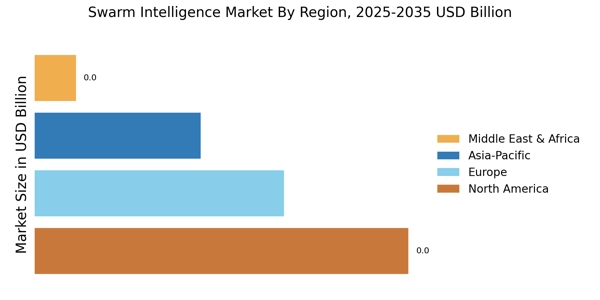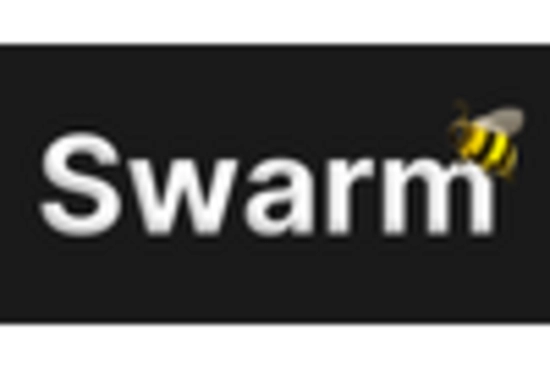Emergence of Collaborative Robotics
The emergence of collaborative robotics is reshaping the landscape of the Swarm Intelligence Market. Collaborative robots, or cobots, are designed to work alongside humans, enhancing productivity and safety in various applications. The integration of swarm intelligence into these systems allows for improved coordination and task allocation among multiple robots. Industries such as manufacturing and logistics are increasingly adopting collaborative robotics to streamline operations and reduce labor costs. The market for collaborative robots is expected to grow significantly, with projections indicating a potential increase of over 40% by 2028. This growth reflects the transformative impact of swarm intelligence on the future of work within the Swarm Intelligence Market.
Rising Demand for Autonomous Systems
The Swarm Intelligence Market is experiencing a notable surge in demand for autonomous systems across various sectors. Industries such as transportation, agriculture, and logistics are increasingly adopting swarm intelligence to enhance operational efficiency. For instance, the use of drone swarms for agricultural monitoring and crop management has shown promising results, leading to improved yield and reduced costs. According to recent estimates, the market for autonomous systems utilizing swarm intelligence is projected to grow at a compound annual growth rate of over 25% in the coming years. This trend indicates a shift towards automation, where swarm intelligence plays a pivotal role in decision-making processes, thereby driving the overall growth of the Swarm Intelligence Market.
Advancements in Artificial Intelligence
Recent advancements in artificial intelligence (AI) technologies are significantly influencing the Swarm Intelligence Market. The integration of machine learning algorithms with swarm intelligence frameworks allows for enhanced data processing and decision-making capabilities. This synergy enables systems to adapt and learn from their environments, leading to more efficient solutions in real-time applications. For example, AI-driven swarm intelligence is being utilized in smart city initiatives to optimize traffic flow and reduce congestion. The market for AI applications in swarm intelligence is expected to witness substantial growth, with projections indicating a potential increase of 30% by 2027. This growth underscores the importance of AI in shaping the future of the Swarm Intelligence Market.
Growing Need for Real-Time Data Processing
The increasing need for real-time data processing is driving the evolution of the Swarm Intelligence Market. As organizations generate vast amounts of data, the ability to analyze and act upon this information swiftly becomes crucial. Swarm intelligence systems, characterized by their decentralized nature, excel in processing data from multiple sources simultaneously. This capability is particularly beneficial in sectors like finance and healthcare, where timely decision-making can have significant implications. The market for real-time data processing solutions utilizing swarm intelligence is projected to expand rapidly, with estimates suggesting a growth rate of around 20% annually. This trend highlights the critical role of swarm intelligence in addressing the challenges posed by big data.
Increased Investment in Research and Development
Investment in research and development (R&D) within the Swarm Intelligence Market is on the rise, as organizations seek to explore innovative applications and improve existing technologies. Governments and private entities are allocating significant resources to develop advanced swarm intelligence algorithms and systems. This trend is particularly evident in sectors such as defense, where swarm robotics are being researched for surveillance and reconnaissance missions. The R&D expenditure in this domain is anticipated to reach several billion dollars by 2026, reflecting a commitment to harnessing the potential of swarm intelligence. Such investments are likely to lead to breakthroughs that will further propel the Swarm Intelligence Market forward.


















Leave a Comment